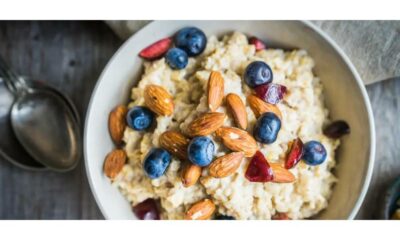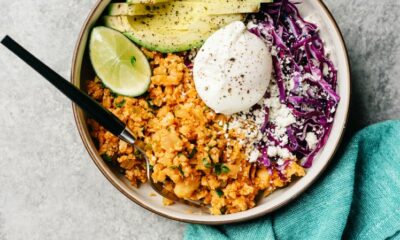Living with diabetes doesn’t have to mean giving up on your weight loss goals. In fact, achieving a healthy weight can significantly improve blood sugar control and overall well-being. This comprehensive guide explores effective diabetic meal plans for weight loss, providing delicious and balanced options to help you shed pounds safely and sustainably.
Understanding Diabetes and Weight Loss
Diabetes, a chronic condition characterized by high blood sugar levels, affects millions worldwide. There are two main types:
- Type 1 Diabetes: The body doesn’t produce enough insulin.
- Type 2 Diabetes: The body either resists insulin’s effects or doesn’t produce enough.
Weight management plays a crucial role in diabetes control. Excess weight can further impair insulin sensitivity, making blood sugar regulation more challenging. Conversely, losing even a moderate amount of weight (5-10% of body weight) can significantly improve blood sugar control and reduce the risk of diabetes complications.
Creating a Diabetic Meal Plan for Weight Loss
Here are key principles to consider when creating a diabetic meal plan for weight loss:
- Portion Control: Focus on mindful eating practices and using smaller plates to ensure you consume appropriate calorie levels for weight loss.
- Balanced Macronutrients: Include a balance of carbohydrates, protein, and healthy fats in every meal to promote satiety, manage blood sugar, and support overall health.
- Low-Glycemic Index Choices: Opt for low-glycemic index (GI) carbohydrates that release glucose slowly into the bloodstream, preventing blood sugar spikes and crashes. Examples include whole grains, non-starchy vegetables, and fruits with skin.
- Fiber is Your Friend: Include plenty of fiber-rich foods in your diet. Fiber slows down digestion, keeping you feeling full for longer and promoting healthy blood sugar control.
- Healthy Fats: Don’t shy away from healthy fats like avocados, nuts, seeds, and olive oil. These fats contribute to satiety, support cell function, and may improve insulin sensitivity.
Sample Diabetic Meal Plans for Weight Loss
Day 1:
- Breakfast: Greek yogurt with berries and a sprinkle of chia seeds (protein, fiber, low-glycemic carbs)
- Lunch: Grilled chicken breast with a side salad (protein, healthy fats, low-glycemic veggies)
- Dinner: Salmon with roasted Brussels sprouts and quinoa (protein, healthy fats, low-glycemic complex carbs)
- Snacks (choose 2): Apple slices with almond butter, vegetable sticks with hummus
Day 2:
- Breakfast: Scrambled eggs with spinach and whole-wheat toast (protein, fiber, complex carbs)
- Lunch: Lentil soup with a whole-wheat roll (protein, fiber, complex carbs)
- Dinner: Turkey chili with a side of brown rice (protein, fiber, complex carbs)
- Snacks (choose 2): Cottage cheese with chopped vegetables, handfull of mixed nuts
Day 3:
- Breakfast: Oatmeal with chopped nuts and a drizzle of honey (fiber, complex carbs, healthy fats)
- Lunch: Tuna salad sandwich on whole-wheat bread with lettuce and tomato (protein, fiber, low-glycemic veggies)
- Dinner: Chicken stir-fry with brown rice and mixed vegetables (protein, complex carbs, low-glycemic veggies)
- Snacks (choose 2): Pear with a string cheese, air-popped popcorn
Day 4:
- Breakfast: Whole-wheat pancakes with berries and a dollop of low-fat yogurt (complex carbs, protein, low-glycemic fruit)
- Lunch: Black bean burger on a whole-wheat bun with a side salad (protein, fiber, low-glycemic veggies)
- Dinner: Baked cod with roasted sweet potato and asparagus (protein, complex carbs, low-glycemic veggies)
- Snacks (choose 2): Edamame pods, Greek yogurt with a sprinkle of cinnamon
Day 5:
- Breakfast: Smoothie made with Greek yogurt, spinach, banana, and almond milk (protein, fiber, low-glycemic fruit)
- Lunch: Chicken Caesar salad with whole-wheat croutons (protein, healthy fats, low-glycemic veggies)
- Dinner: Vegetarian chili with a dollop of low-fat sour cream and a side of whole-wheat cornbread (fiber, protein, complex carbs)
- Snacks (choose 2): Carrot sticks with hummus, handful of berries
Remember: These are just sample meal plans. You can customize them based on your preferences, dietary needs, and calorie goals. It’s crucial to consult with a registered dietitian or healthcare professional to create a personalized plan that aligns with your specific health requirements.
Additional Tips for Success
- Plan Your Meals: Planning your meals and snacks in advance helps you make healthy choices and avoid impulsive eating. Consider meal prepping on weekends to save time during busy weekdays.
- Read Food Labels: Pay close attention to serving sizes and carbohydrate content when choosing packaged foods. Opt for products with lower sugar content and higher fiber content.
- Stay Hydrated: Drinking plenty of water throughout the day keeps you feeling full, reduces cravings, and helps your body function optimally. Aim for at least 2-3 liters of water per day.
- Be Active: Regular physical activity is essential for weight loss and blood sugar control. Aim for at least 30 minutes of moderate-intensity exercise most days of the week.
- Manage Stress: Chronic stress can elevate blood sugar levels and hinder weight loss efforts. Practice relaxation techniques like yoga, meditation, or deep breathing to manage stress effectively.
- Monitor Your Progress: Regularly monitor your blood sugar levels and weight. This allows you to adjust your meal plan or activity level as needed to stay on track with your goals.
- Celebrate Non-Scale Victories: Don’t just focus on the scale. Celebrate non-scale victories like increased energy levels, improved sleep, and better blood sugar control. These markers are just as important as weight loss.
Living with Diabetes and Weight Loss: A Sustainable Approach
Losing weight and managing diabetes effectively requires a long-term commitment to healthy lifestyle practices. Here are some key takeaways to remember:
- Focus on Progress, Not Perfection: Aim for progress, not perfection. There will be setbacks along the way. The key is to learn from them, get back on track, and celebrate your overall progress.
- Make Gradual Changes: Drastic changes are often unsustainable. Introduce healthy changes gradually to make them easier to maintain in the long run.
- Find What Works for You: Experiment with different meal plans and find what works best for your taste preferences and lifestyle. Sustainability is key to long-term success.
- Seek Support: Don’t hesitate to seek support from your doctor, a registered dietitian, or a diabetes support group. Having a network of support can make a significant difference in your weight loss journey.
By implementing these strategies and creating a personalized diabetic meal plan for weight loss, you can achieve your goals safely and sustainably, promoting a healthier future for yourself.
Disclaimer:
This information is intended for general knowledge only and does not substitute for professional medical advice. Always consult your doctor or a registered dietitian before making any changes to your diet or exercise routine, especially if you have any underlying health conditions.

 Diabetology2 weeks ago
Diabetology2 weeks ago
 Diabetology1 week ago
Diabetology1 week ago
 Diabetology5 days ago
Diabetology5 days ago
 Diabetology6 days ago
Diabetology6 days ago
 Diabetology6 days ago
Diabetology6 days ago
 Diabetology3 days ago
Diabetology3 days ago
 Diabetology3 days ago
Diabetology3 days ago
 Diabetology1 day ago
Diabetology1 day ago
















